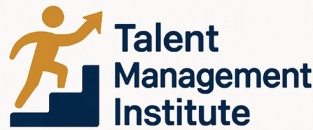
Core Responsibilities of a Personnel Manager
Key Functions and Duties of a Personnel Manager
A personnel manager plays a crucial role within any organization, acting as the bridge between employees and management. As the handler of the human resource functions, this role involves a myriad of responsibilities designed to support both the business and its workforce. Understanding these core responsibilities can help simplify the complex landscape of personnel management.
Firstly, the personnel manager is responsible for crafting effective employee relations. This includes addressing employee grievances, enhancing communication channels, and fostering a positive work environment that motivates and engages employees. Their work ensures that the company remains a place where people want to build their careers.
Another pivotal function is overseeing personnel management, which entails managing the day-to-day HR operations. This involves coordination and administration of employee-related services such as compensation and benefits, employee records, and developing policies and processes for HR functions.
The personnel manager also plays a critical role in talent acquisition. This involves not just hiring the right candidates that align with the company’s culture and goals but also ensuring the retention of top talent. Navigating the complex world of talent hiring is challenging, and often personnel managers may seek partnerships with staffing agencies for efficient employment solutions. To discover more about this, you can explore some insights on navigating the complex world of human resources staffing agencies.
In addition to these duties, personnel managers are expected to prioritize the training and development of employees. Through organizing training programs, webinars, and workshops, they ensure that employees continue to grow their skills and meet the evolving needs of the business.
Understanding and executing these responsibilities requires a comprehensive set of skills and qualifications, including a bachelor's degree in human resources or a related field along with relevant experience in resource management. Developing strategic management skills and a strong command of data-driven decision-making also forms a core part of a successful personnel manager's profile.
Skills and Qualifications Required
Essential Skills and Required Qualifications
To effectively fulfill the role of a personnel manager, a robust combination of skills and qualifications is crucial. This not only enables the manager to navigate the complexities of human resources but also helps in addressing the dynamic needs of employees and the organization as a whole. Firstly, excellent communication skills are non-negotiable. Personnel managers are the bridge between employees and upper management, and they must articulate ideas and relay messages clearly. Being adept in both verbal and written communication fosters a productive work environment and enhances employee relations. In addition to communication, personnel managers must possess strong problem-solving and decision-making skills. They are often at the forefront of conflict resolution and must handle situations with tact and fairness. This requires a thorough understanding of labor laws and company policies to ensure compliance in various employment matters. Another critical skill is organizational agility. A personnel manager must efficiently manage multiple tasks and prioritize them in line with business goals. This includes overseeing talent acquisition processes, workforce planning, and training development. In these tasks, the ability to utilize data-driven approaches is increasingly important, leveraging HR analytic tools to inform decision-making. Moreover, proficiency in human resource management software is essential. Modern personnel management requires the integration of technology to streamline processes and improve efficiency. Solutions like HR document management software can significantly enhance workflow by organizing and maintaining important records electronically. Learn more about efficient HR solutions here. When it comes to qualifications, most companies prefer candidates with a bachelor degree in human resources, business administration, or a related field. Additionally, certification from recognized HR bodies can give an edge, showcasing commitment to the profession and continuous learning. Lastly, personnel managers must be adept in cultivating employee engagement and development. Fostering a culture of growth and recognition can lead to higher retention rates and a happier, more productive workforce, which aligns seamlessly with the broader organizational goals.Navigating Talent Acquisition and Retention
Strategies for Effective Talent Acquisition
In the realm of personnel management, talent acquisition is a critical responsibility. Personnel managers must be adept at identifying and attracting the right candidates to meet the organization's needs. This involves a comprehensive understanding of the company's culture, the specific job description, and the skills qualifications required for each role. Effective talent acquisition strategies include leveraging technology for recruitment, utilizing data-driven insights, and engaging in proactive outreach to potential candidates.
Retention: Keeping Top Talent Engaged
Once talent is acquired, the next challenge is retention. Employee engagement plays a significant role in keeping top talent within the organization. Personnel managers must foster a positive work environment that encourages growth and development. This can be achieved through regular training development programs, competitive compensation benefits, and clear career progression paths. It's essential to create an inclusive culture where employees feel valued and motivated to contribute to the company's success.
The Interplay of Talent Acquisition and Retention
The relationship between talent acquisition and retention is closely intertwined. A successful talent acquisition strategy can enhance employee retention by ensuring a good fit between the employee and the organization from the start. Personnel managers need to continuously evaluate and refine their strategies to adapt to changing workforce dynamics and business needs. For insights on how to manage these aspects effectively, consider exploring contract rates for top technical talent as a resource.
Challenges in Modern Talent Management
Overcoming Challenges in Today's Talent Management Landscape
Navigating the intricate world of personnel management is rife with challenges, notably the ever-evolving workforce demands and the dynamic nature of global markets. A personnel manager today must be adept at handling these complexities to ensure the effective management of resources within any organization. Modern personnel management faces several obstacles, including aligning employment strategies with company goals and adapting to the rapid pace of technological advancements. Furthermore, the internationalization of businesses demands personnel managers to cultivate skills for managing diverse work environments and employee relations.- Navigating Cultural Diversity: A key challenge is managing a diverse workforce. Personnel managers must foster an inclusive environment that capitalizes on various backgrounds and perspectives.
- Employee Engagement and Retention: With competition for talent at an all-time high, resources managers are under pressure to improve employee engagement and retention strategies. This involves tailoring compensation benefits and training development programs that meet employees' needs and align with their career aspirations.
- Regulatory Compliance: Managers also grapple with regulatory scrutiny. Ensuring that all employment practices meet legal requirements is critical to avoid litigation and maintain a positive company image.
- Evolving Skill Sets: As job profiles change, there arises a need for continuous upskilling. Personnel managers play a pivotal role in providing relevant training and development opportunities, aligning with both the business's strategic goals and the personal growth of their employees.
The Role of Technology in Personnel Management
Leveraging Technology for Effective Personnel Management
The advent of technology has considerably transformed the landscape of personnel management, streamlining various human resources functions and bolstering efficiency. Personnel managers are increasingly adopting technology-driven tools to manage employee data, enhance communication, and automate routine tasks, ultimately facilitating a more dynamic work environment. Modern resource management systems are invaluable in the organization and storage of employee data. These systems allow managers to access information quickly and accurately, aiding in decision-making related to employee engagement, retention, and development. By utilizing robust data analytics, personnel managers can identify trends and predict future workforce requirements, ensuring the company remains competitive in the business landscape. In addition, training and development programs are being reshaped by technology. E-learning platforms empower employees with the autonomy to pursue continuous learning, aligning with their personal career goals and the company’s objectives. These platforms also enable managers to track progress and tailor training initiatives to meet specific skills and qualifications required for various roles. The role of digital communication tools cannot be overstated in fostering employee relations. These tools provide employees with real-time access to company resources, facilitating open feedback channels and promoting a collaborative work environment. Consequently, they play a central role in enhancing employee satisfaction and engagement. With the rise of remote work, the integration of technology has become even more pivotal. Resource managers are tasked with creating a virtual environment that mirrors in-person interactions, maintaining cohesion and productivity throughout the organization. Thus, adapting to technological advancements is not a mere managerial responsibility but a crucial element of strategic personnel management in today's ever-evolving corporate landscape.Future Trends in Talent Management
Emerging Trends Shaping Talent Management
The field of talent management is continuously evolving, driven by dynamic business environments and the ever-changing human resource landscape. Personnel managers, along with other human resources professionals, must adapt to these changes to remain successful in managing and optimizing talent within their organizations.- Employee Engagement and Well-being: The focus on employee engagement and well-being is more prominent than ever. Personnel managers are enhancing work environments to foster employee satisfaction, which, in turn, boosts productivity and retention rates.
- Data-Driven Decision Making: The use of data analytics in talent management is becoming more widespread. Resources managers leverage data insights to make informed decisions about skill development, talent acquisition, and employee engagement. This data-centric approach helps in tailoring strategies that align with company goals and employee needs.
- Remote Work and Flexible Arrangements: As businesses continue to embrace remote work, personnel managers must navigate the challenges and opportunities it presents. Establishing clear communication, managing employee relations, and ensuring a cohesive company culture remain essential responsibilities for human resource professionals.
- Continuous Learning and Skill Development: As job roles evolve, so does the need for continuous learning and professional development. Training development initiatives are becoming more personalized, allowing employees to acquire skills and qualifications necessary for their roles and future career advancement. Personnel managers play a crucial role in identifying these needs and facilitating appropriate training opportunities.
- Technology Integration: The integration of technology in personnel management is vital for streamlining processes and enhancing productivity. Tools such as HR software are used to manage aspects like employee performance, compensation benefits, and employment records, allowing managers to focus on strategic responsibilities.













